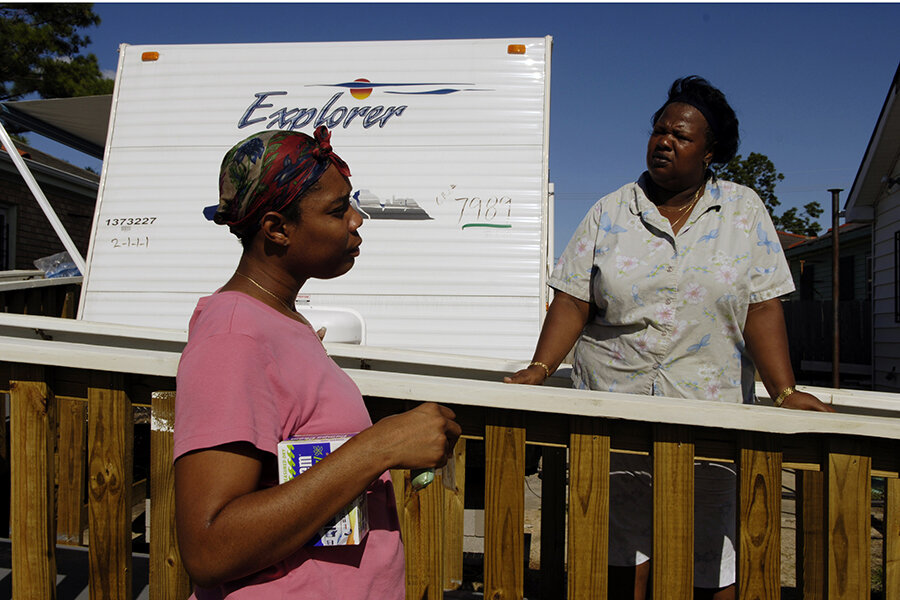It takes moral capital to build a village
Loading...
[Editor's note: A version of this article was delivered as a speech to the Council on Foundations in October 2014.]
Wherever we look on the globe it seems to be the destiny of populations to live between two worlds: an old order that is dying but not yet dead, and a new order that is conceived but not fully born.
Communities throughout the United States, for example, have been experiencing a population shift that has brought new neighbors who are fueling the economy and a new middle class of color that provides the potential for a new, stronger civic life. But before we can fully engage them in a common effort to make our communities more of a community, they must be made to feel that they belong, that their traditions are respected, and their contributions recognized.
This transition has a profound impact on organizations dedicated to building and strengthening communities. I'm speaking of philanthropies and, in particular, foundations.
Whether we are building community in the Americas, Europe, Asia, or Africa, we need to ask what it means to help make a community more of a community in a world that is integrating and fragmenting at the same time, a world in which the more interdependent we become, the more people are turning inward to smaller communities of meaning and memory?
Let me be bold enough to suggest that the foundations with the most impact in the new century may well be those that integrate into their operating plans, goals, and strategies the use of at least four nonfinancial forms of capital that go beyond traditional grantmaking.
Some of my friends who have heard me make this argument have started to call this the “SMIRF plan,” in that it calls for an integrated use of social, moral, intellectual, reputational and, of course, financial capital for making a community more of a community.
The first one is “Social Capital,” that respect for differences that any foundation must embrace if it wants to successfully strengthen a diversifying community, be it Baltimore, Paris, or Johannesburg.
Another asset is moral capital. While I emphasize the importance of moral capital, we do not necessarily need moral language to achieve moral ends. Nowhere is this more obvious than in how we address issues of equity and inclusion. There is now an abundance of empirical evidence that shows inequality damages social relationships, and that measures of trust and social cohesion are higher and violence is lower in more equal societies. That is the message we must convey as we remind our fellow citizens of our obligations to each other. We have an opportunity to change the narrative from simply a moral imperative to enlightened self-interest. I learned a long time ago that the language of morality can sometimes be a deterrent to achieving moral ends. Enlightened self-interest sells in many instances where public interest does not.
Another asset that is often underutilized is intellectual capital. Many activists in the sector are engaged passionately in public life, but like Thoreau at Walden Pond, there is a tendency to build castles in the sky and then set out to put foundations under them (no pun intended). Community foundations can help them to ground their passion into persuasive evidence by providing not just networks but knowledge. I found through my work as chair of the Louisiana Disaster Recovery Foundation, established by the governor in the aftermath of hurricane Katrina, that one of the most important assets we provided was intellectual capital that strengthened the capacity of those formerly marginalized to participate in deliberations about their future.
Finally, there is a form of capital we rarely think about and is one of the most overlooked and underutilized. It is what Robert Putnam has called reputational capital. Like conventional capital for conventional borrowers, community foundations can use their reputational capital as a kind of collateral for those whose formal credentials understate their potential and reliability. An endorsement through a grant, a loan, technical assistance, or even high level partnerships is especially helpful to groups that are often marginalized because of the past of those who lead them and the pathologies of those who are served by them. Their leaders may be most effective in working with high school dropouts, former drug addicts, and the formerly incarcerated precisely because they were once victims of the same predicament; and because they greatly value their support from a community foundation they are very likely to acquire an additional incentive to perform responsibly.
– Ambassador James A. Joseph has served in senior executive or advisory positions for four US presidents, including deputy secretary of the Interior for President Carter and US Ambassador to South Africa for President Clinton. He serves as a member of the board of directors for the FB Heron Foundation and is author of "Saved for a Purpose," which will be published this fall by Duke University Press.







